Highlights of the 2004 Chino Airshow
|
As you might expect of an American airshow, Chino puts a few P-51D Mustangs
in the air during the show. Most shows, however, can't do it
quite as nicely as this! The aircraft at the back was built
in 1944 and served for a time with the Bolivian air force, it's now owned
by Chuck Hall, a former airline pilot who takes it to many shows in southern
California.
|
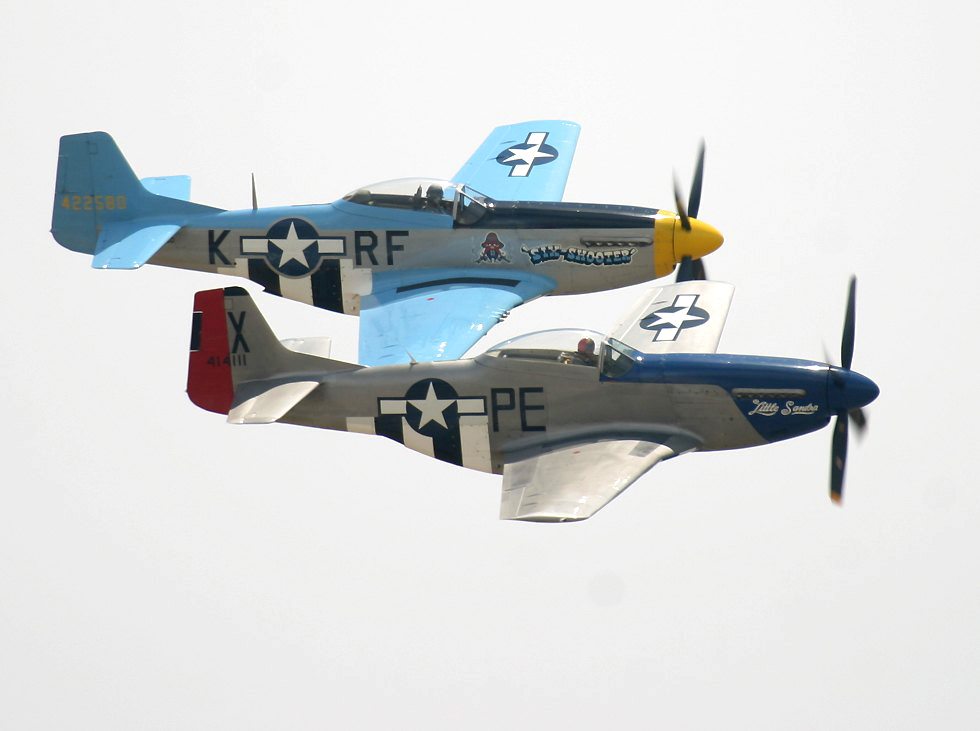 |
|
There are far fewer P-38 Lightnings still flying than Mustangs, but Porky II
went through its paces. The Lightning is one of only two turbo
supercharged fighter aircraft which flew in world war two, the other being
the radial engined P-47 Thunderbolt. You can see the superchargers
below, on the tops of the twin booms where they meet the wings.
Since this was pretty fancy technology at the time, the United States had
a ban on exporting the superchargers, so the UK returned the first 143
P-38s they received without this essential piece of equipment.
The Lightning was the fastest aircraft in the USAAF inventory when it was
first delivered near the end of 1941, but it achieved more success in the
Pacific theater than in Europe. Richard Bong scored 40 air-to-air
victories in the Pacific in this type of aircraft, and so became the highest
scoring American ace during the war. Its other great claim
to fame was the successful downing of Japanese Admiral Yamamoto's aircraft
during a long-range strike by several P-38s.
|
 |
|
Here's that other turbo supercharged fighter, the P-47 Thunderbolt.
It used the same massive Pratt and Whitney R-2800 Double Wasp radial engine
used by many other American aircraft like the F4U Corsair, F6F Hellcat,
F7F Tigercat, F8F Bearcat as well as transport planes like the DC-6 and
C-46 Commando. The Thunderbolt was the largest fighter of world
war two, but the 2300 horsepower engine could pull it along at a very creditable
433 mph (697 km/h), and a prototype P-47J became the fastest piston-engined
fighter of the war by flying at 507mph (816 km/h). It was a
very good fighter and also a very good ground attack and strafing aircraft,
accounting for over 7000 enemy aircraft destroyed in Europe.
The version shown here is a very early model, in fact it's the only surviving
"razorback" P-47G, with the original high fuselage directly behind the
canopy, rather than the "teardrop" style canopy developed by the British
for the Spitfire, which was used on the Mustangs above, as well as a number
of other allied aircraft.
|
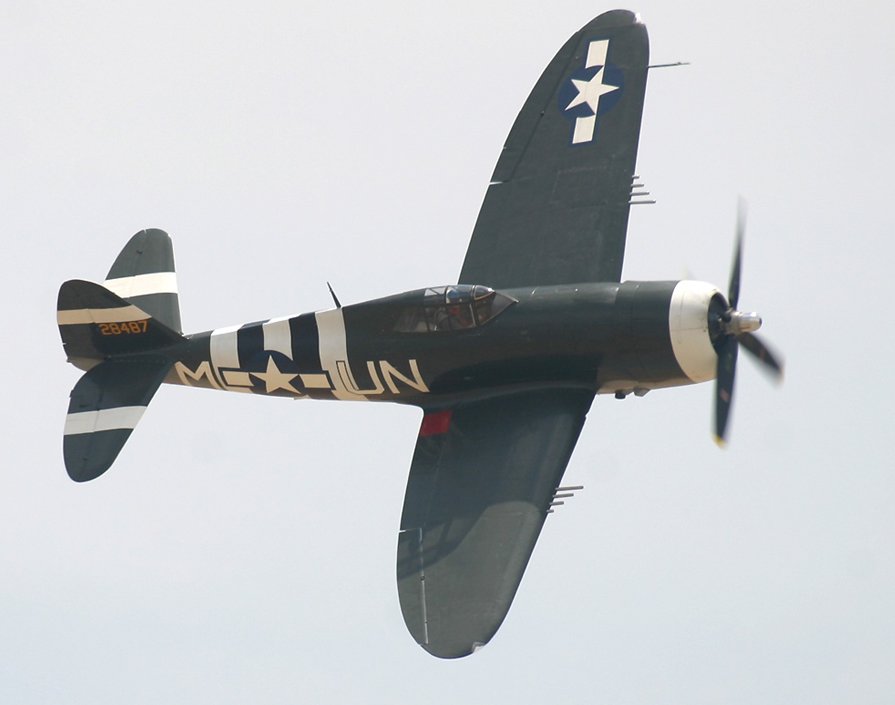 |
|
Here's one of my favorite American world war two aircraft, a Douglas Dauntless
dive bomber, only three of which are still flying. At the Battle
of Midway the Dauntlesses sank several Japanese aircraft carriers soon
after a flight of six Grumman Avenger torpedo bombers had been shot to
pieces on that type's first combat mission (you can see the single surviving
Avenger, plus a photo of the first President Bush sitting in his Avenger,
on the
Wanaka Warbirds airshow page). The Dauntless was designed
by the legendary Ed Heinemann, who also did the A-1 Skyraider, shown later
on this page.
|
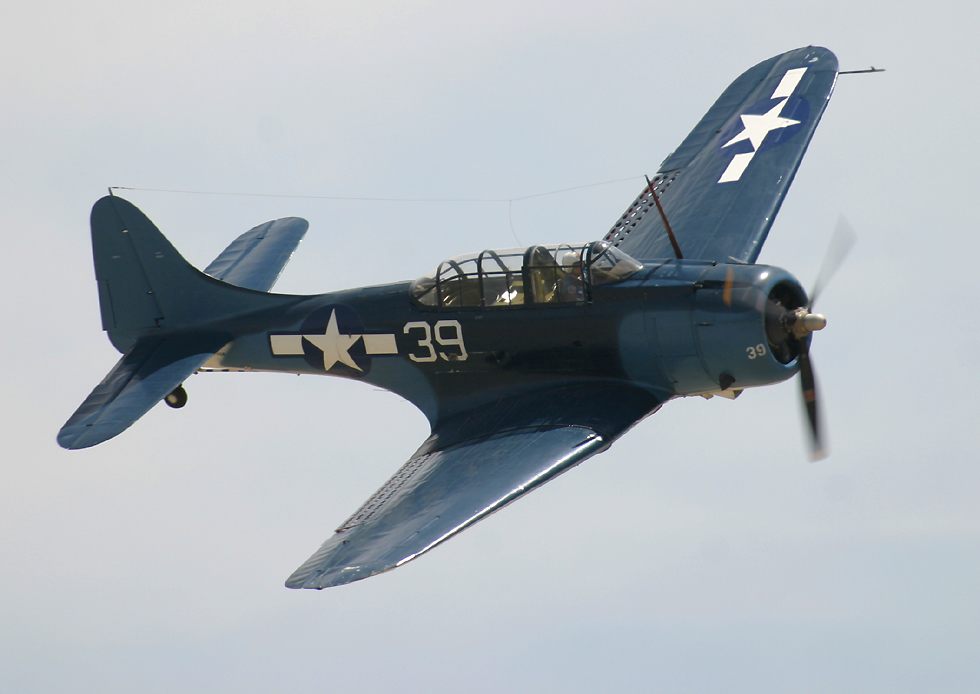 |
|
The Chino show had a superlative collection of American world war two naval
aircraft on display; the Dauntless was joined by a pair of FM-2 Wildcats
(which served as the initial "victims" of the dogfight with a pair of Zeroes
and the Lightning), an F4U Corsair, F6F Hellcat, the two rare F7F Tigercats
shown in formation below, and two Grumman Avengers (one in British Royal
Navy colors). You can see a whole page about the
F7F Tigercat which flew at the Duxford airshow in 2002.
The Tigercat arrived too late for service in world war two, so only 350
were ever built, but it's a very graceful and innovative aircraft.
|
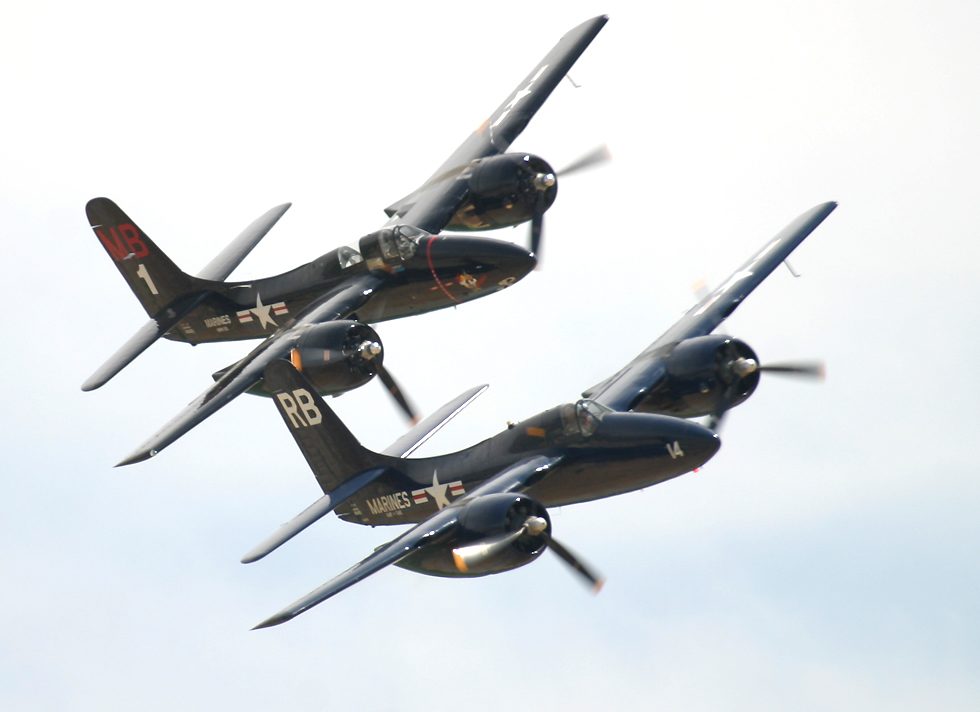 |
|
The pilot of this A-1 Skyraider put on a really excellent display, throwing
his large aircraft around in front of the crowd, giving them an excellent
view of this large naval attack aircraft. The Skyraider could
carry phenomenal amounts of ordnance, as shown by the bombs and rockets
on this example, and in fact a single-engined Skyraider with a one-man
crew could carry a heavier bombload than a four-engined B-17 Flying Fortress
with a ten-man crew. The Skyraider also has the distinction
of being the only American propeller aircraft with nuclear capability,
which is pretty impressive for a plane which first flew while world war
two was still underway. Performance like this allowed it to
continue in service during both the Korean and Vietnam wars, where its
heavy payload and long "loiter" time made it especially suitable for supporting
helicopter rescues of downed airmen.
|
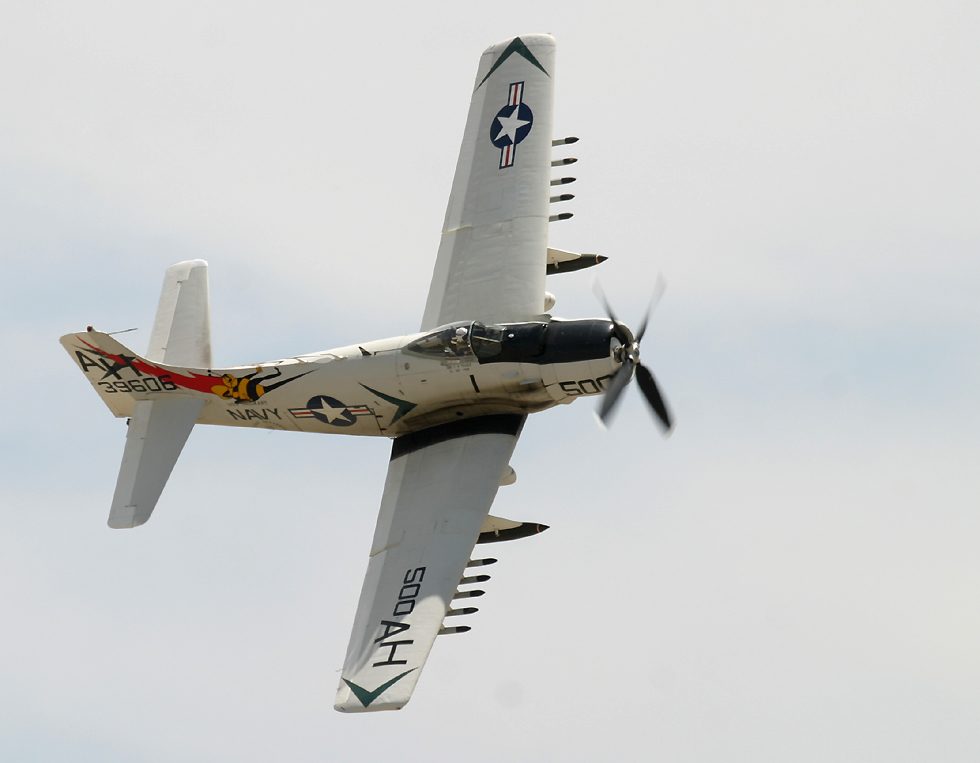 |
|
The F-86 Sabre was developed after the Skyraider but had a far shorter, but
still very successful, life. It's most famous for its battles
during the Korean War against MiG 15s, and at the show they even performed
a simulated dogfight between this F-86 and its MiG opponent for the benefit
of the crowd. The Sabre was the first American jet to exceed
the speed of sound, a feat achieved during a shallow dive only a short
time after Chuck Yeager had become the first person to break the sound
barrier in the rocket powered X-1. Sabres were produced in
many variants, including the FJ Fury naval version, and were also used
by a number of America's allies.
|
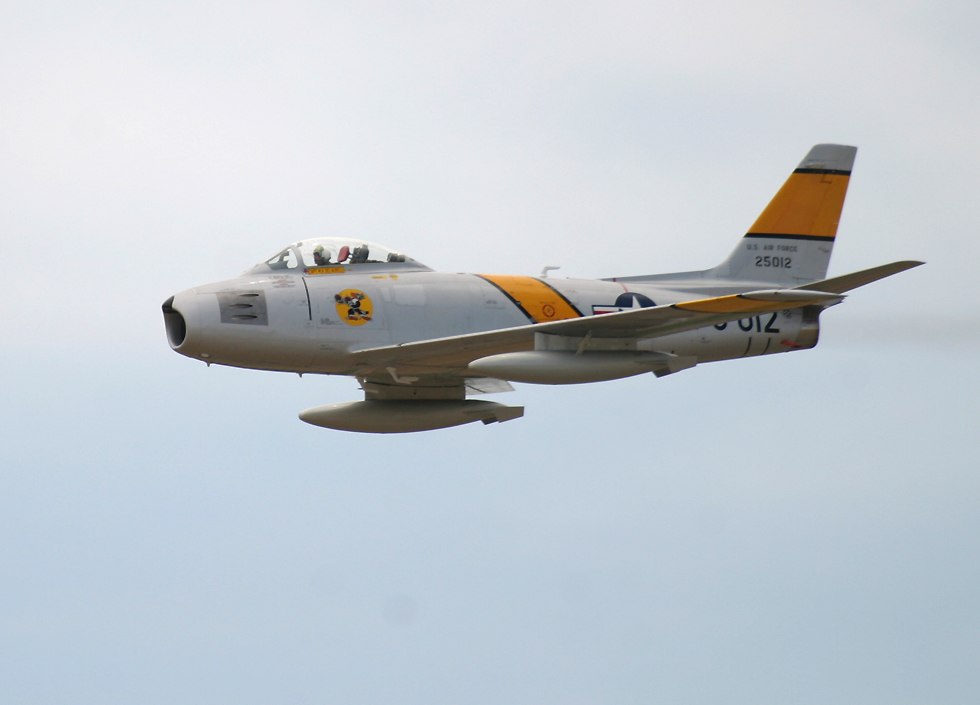 |
|
Here's a USAF aircraft you might not have seen before - an original Northrop N9M
flying wing. This was a one third scale proof-of-concept aircraft
to demonstrate the feasability of a flying wing bomber. From
this prototype, Northrop went on to develop the full size B-35 bomber which
first flew in 1946 and was developed into the B-49 jet bomber.
Although these aircraft never entered service, the technology they pioneered
eventually became the basis of the B-2 "stealth bomber". You
can see photos of a modern day B-2, as well as a B-35 and a B-49, on my
Frederick
Airshow 2000 page. Although they might look weird, the
first test pilot of a B-35 said that if you didn't look back then you wouldn't
know you weren't in a conventional aircraft. The B-49 did have
one serious accident, which killed the USAF test pilot Glenn Edwards at
Muroc Air Force Base, which was later renamed Edwards Air Force Base in
his memory.
|
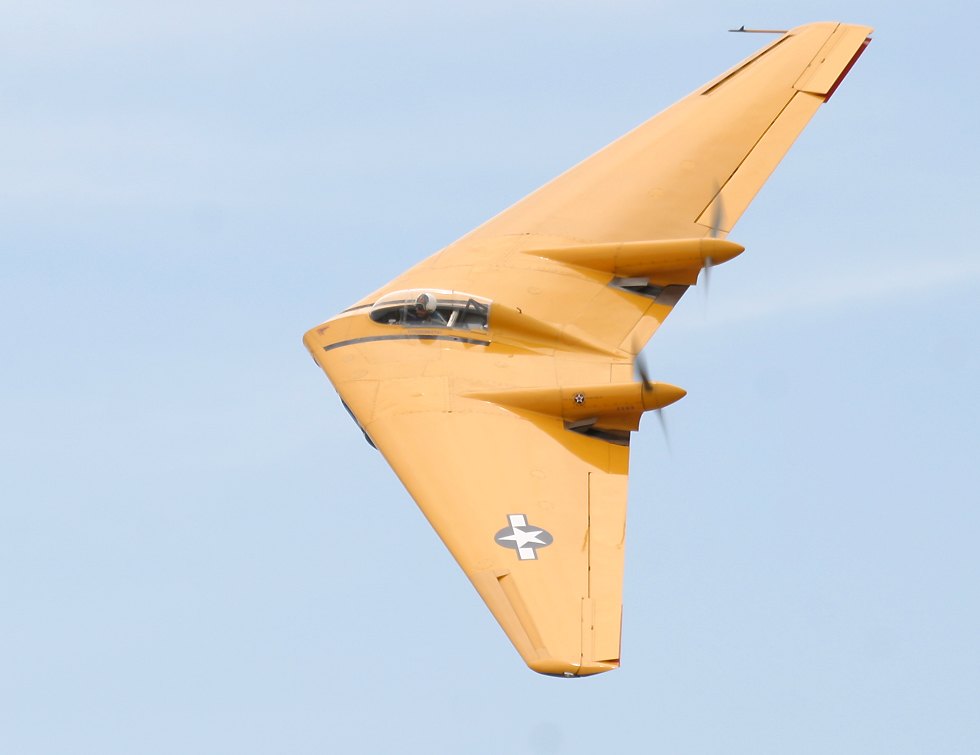 |
|
Here's a sight which is almost equally rare at an American airshow - two British
fighters side by side, a Supermarine Spitfire at the back and a Hawker
Hurricane at the front. Although the Spitfire was the best
and most glamorous British fighter of the war, the Hurricane was just as
important during the early years of the war. The Hurricane
was the Royal Air Force's first monoplane fighter when it entered service
at the end of 1937, so it was a huge advance for its time.
Both the Hurricane and the Spitfire (which entered service in the middle
of 1938) were very heavily armed for their day, with eight machine guns
each, but it was the Hurricane which was responsible for destroying more
enemy aircraft during the Battle of Britain than all other means combined.
|
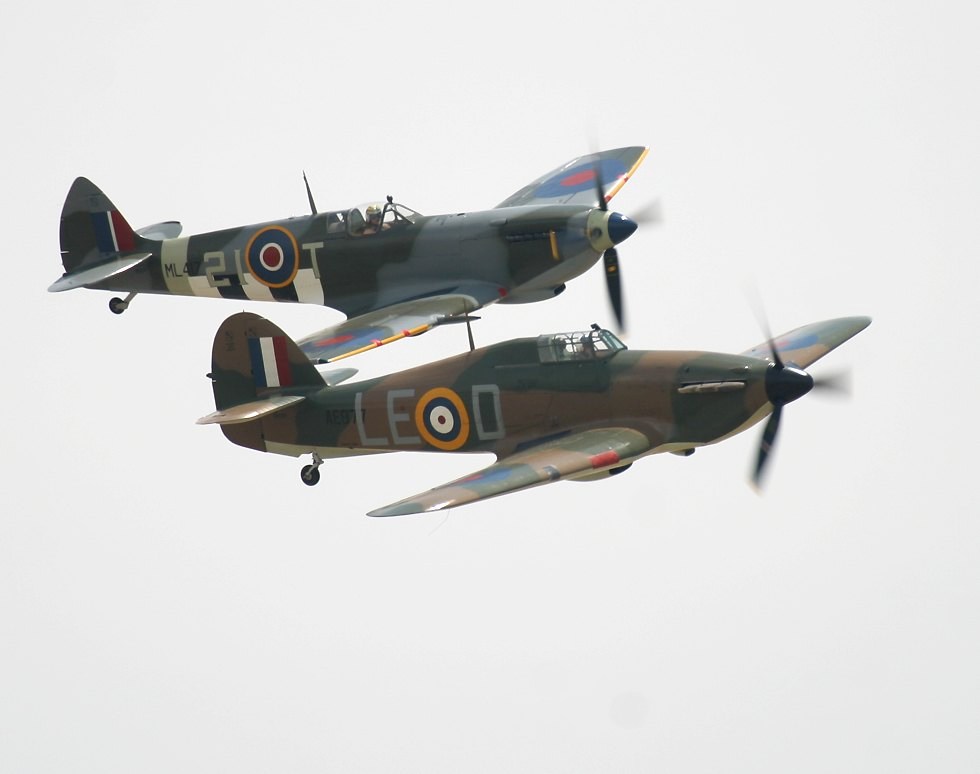
|
|
Ah, but here's something that even British airshow fans would salivate over
- a Mark XIX Spitfire fitted with a late-model Griffon engine from a Shackleton
maritime patrol aircraft, complete with the Shackleton's contra-rotating
propellers! As far as I've been able to work out, no production
Spitfires were ever fitted with contra-rotating propellers, although many
did have Griffon engines (you can recognize the Griffon engined Spitfires
by the long bulges above the exhaust pipes). However, the naval
variant of the Spitfire, called the Seafire, did fly with contra-rotating
propellers, so this isn't an entirely fanciful arrangement.
This aircraft was put together some years ago as part of an attempt on
a time-to-altitude record.
|
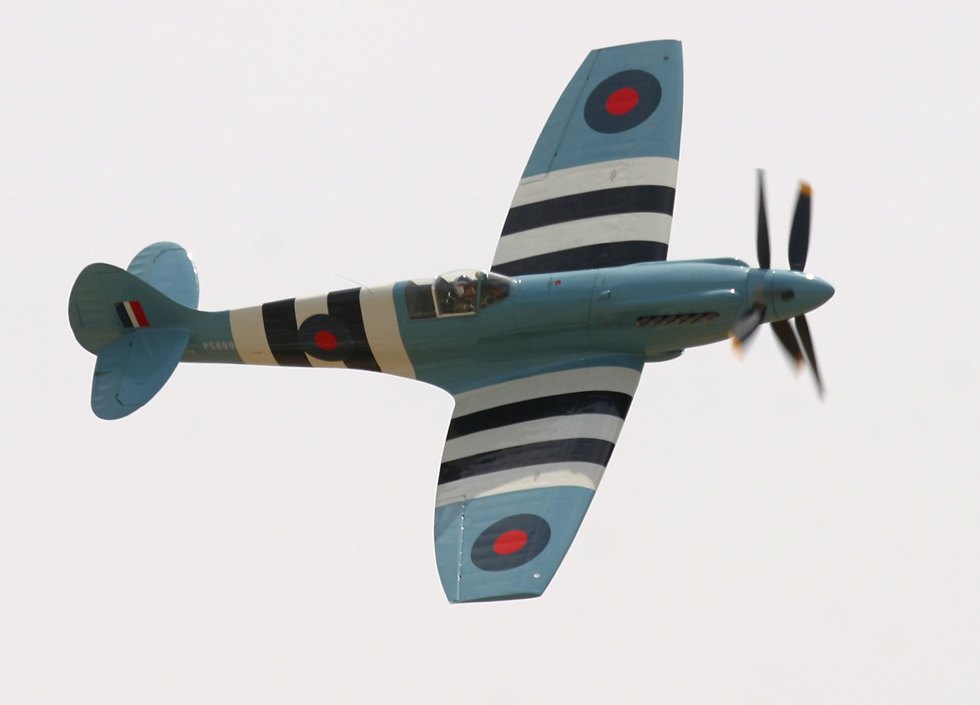
|
|
Here's another British aircraft which even a Brit would be excited to see flying,
a Fairey Firefly carrier fighter, which uses a Griffon engine like the
Mk XIX Spitfire. Although not especially fast, the Firefly
packed a heavy punch with its four cannons, and it was extremely maneuverable.
Sadly, a Firefly like this one crashed at the
Duxford Airshow in the UK in 2003 and both crewmen died, leaving
this other aircraft as the only airworthy example in the world.
|
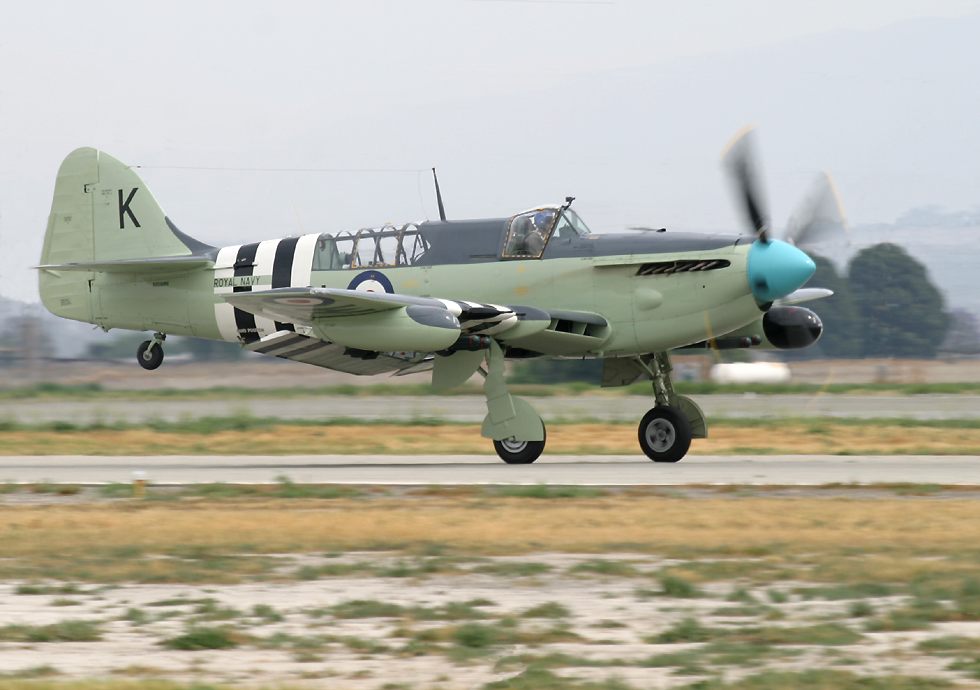 |
|
You don't have to be a British aircraft enthusiast to be excited by this -
it's the world's only flyable Mitsubishi Zero with its original Sakae engine.
There were a couple of other Zeroes at this show, but powered by American
Pratt and Whitney engines. There was also a group of veteran
Japanese Zero pilots at the show, I went over and said "konichi wa" to
them after the show, they asked me something in Japanese which I assumed
was something like, "Do you speak Japanese", so I said "no", in Japanese.
I don't know how they felt earlier in the show when there was a mock dogfight
between a couple of Grumman Wildcats, a pair of Zeroes and a P-38; as usual
at American airshows, the American aircraft came off best, with the Zeroes
in mock flames.
|
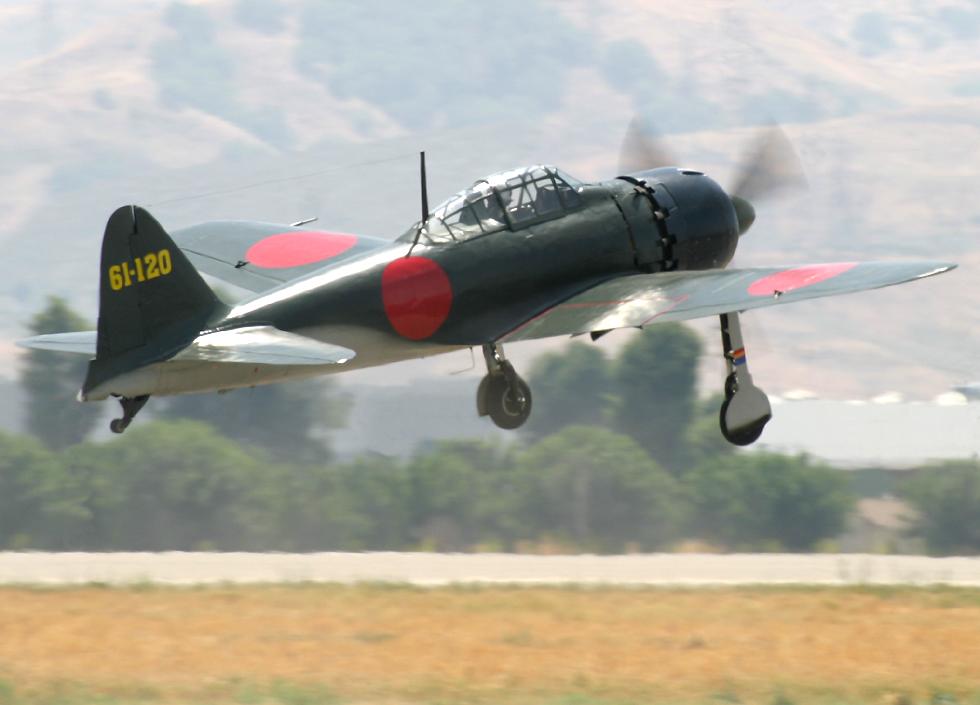 |
|
As you might expect, not many aircraft survive from the defeated air forces,
so it was very nice to see both the Zeroes and this German Fieseler Storch
at the show. Technically, the Storch wasn't at the show, it
was doing touch-and-go landings and takeoffs immediately after the end
of the show. These were a brilliant illustration of the Storch's
absolutely remarkable short takeoff and landing capabilities, which allowed
one to rescue Mussolini from his mountaintop prison where he'd been kept
after a coup during the war. Although there was no airfield
on the mountain, the Germans managed to get a Storch in and back out, and
then they restored Mussolini to power in northern Italy. |
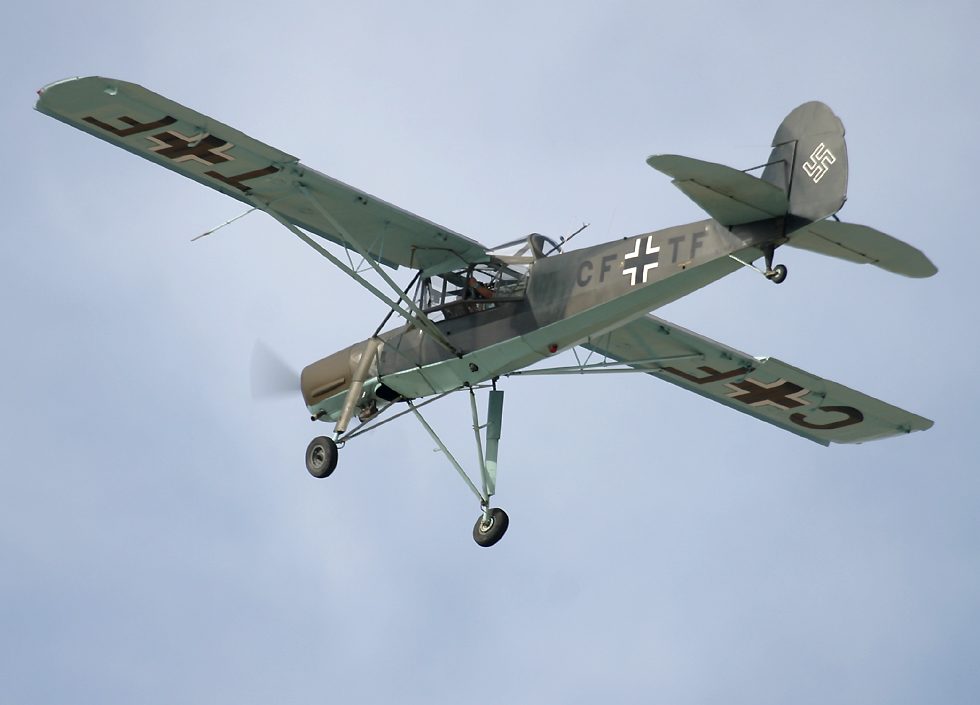
|












